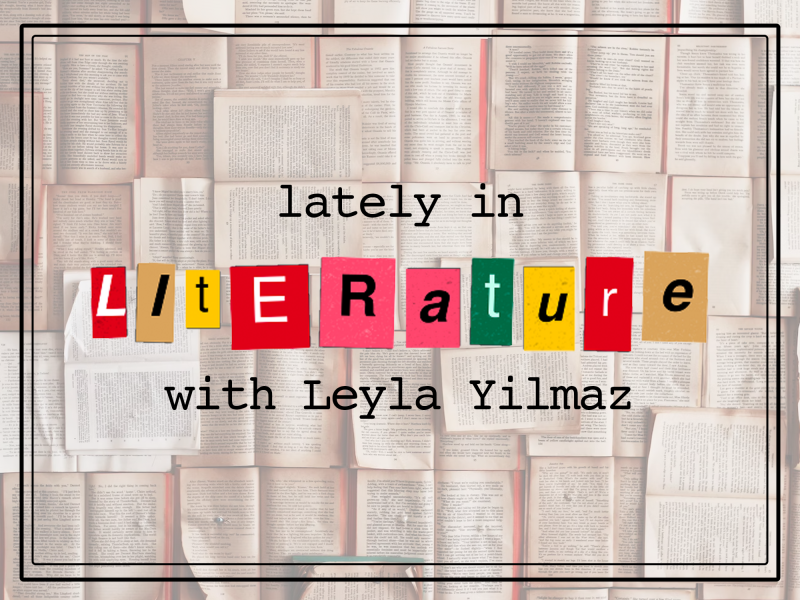“The Seas” by Samantha Hunt is one of my all-time favorite books. It tells the story of a girl who’s convinced she is a mermaid, and her lover, who’s a veteran of the Iraq War. Spoiler alert: at the end the girl turns into a puddle of water, leaving both the readers and her lover in bewilderment.
Since finishing “The Seas,” I thought I’d never find another book that could match its level of eccentricism. That changed when I came upon Julia Armfield’s “Our Wives Under the Sea.”
Armfield’s debut novel centers around a couple — Miri and Leah — as they navigate a relationship haunted by chronic mental health struggles. Leah, a marine biologist, has to endure months under the deep sea when one of her fieldwork missions goes awry. The narrative switches between the perspectives of Leah, chronicling her journey in the sunken submarine, and Miri, who struggles to reconnect with Leah after she has resurfaced from her months-long entrapment under the sea.
Miri finds that the trip has turned her wife into an entirely different person — or maybe even something other than human. Leah is now so anxiety-ridden that she spends most of her time at home in a filled bathtub and frequently drinks salty water, much like the fish she saw on her horror story-like mission.
Throughout the book, Armfield explores the horror genre through references to “Jaws,” retellings of ghost stories and eerie descriptive language that dives into gore. But it’s not the imagery of Leah’s bleeding gums that conveys a crippling sense of fear to the audience. Rather, it’s an existential horror that envelops every single page of this short novel.
Beyond the depiction of shark tales and tense couples therapy sessions, the sense of unease comes from the forced realization that human strength and knowledge is quite inconsequential.
Each chapter of the novel is titled after another zone of the sea. Readers go further below the mighty waters with every turn of a page, eventually reaching zones that even light has not reached. They end up in a dark abyss, facing all that is yet unknown to man.
Like the ocean, our consciousness and “sunken thoughts,” as Miri calls them, are not fully understood. Readers soon realize that, yes, we are clueless about the anatomy of cosmic jellyfish, but also about God, relationships, love and how we are supposed to deal with all the unknown.
Armfield uses Leah’s trancelike descriptions of the deep sea to induce more anxiety in the reader. Long a marine biology nerd, Leah is completely mesmerized by the adaptations of deep sea creatures that allow them to withstand conditions no human could imagine. Eventually, this becomes another reminder of humans’ powerlessness against the natural world.
“I used to think it was vital to know things, to feel safe in the learning and recounting of facts. I used to think it was possible to know enough to escape from the panic of not knowing, but I realise now that you can never learn enough to protect yourself, not really,” says Leah. Looking at her colleagues, she realizes that neither their engineering skills nor their spiritual faith is enough to save them.
Her conclusion: “to know the ocean… is to recognise the teeth it keeps half-hidden.”
Even Miri proves to be powerless against the mightiest third character of the novel, the sea. In the end, her efforts to find out what happened to her lover are inadequate. The idea of her wife becomes just another sunken thought, too mysterious to unpeel.
In middle school, I wrote a short story about a kid who hit his head on some rocks near the seashore. His body was devoured by giant waves and for years after his death, the townspeople cursed the sea for taking him.
I wasn’t trying to make a metaphor on the inadequacy of human knowledge against nature or convey an existential dread, and my literature teacher was quite disappointed by the dark tale. But having read “Our Wives Under the Sea,” I realize how great a medium the sea was to convey a joint struggle we all face upon the realization of our limits.
We, too, are made of mostly water. It is perhaps hardest to accept that we are most clueless when it comes to the nature of our very own being.
Editor’s Note: This article is a review and includes subjective thoughts, opinions and critiques.
